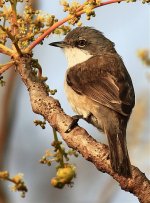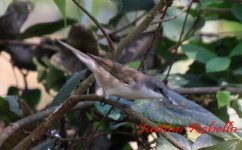Mark Newsome
Born to seawatch...
Attached is an image from the Goa Facebook page by Vedang Saunt. The two forms of Lesser Whitethroat recorded in Goa are Siberian, L.c.blythi (regular sightings of occasional wintering birds shwoing typical blythi features) and Hume's, L.c.althaea (in checklists, never seen a suitable candidate or photo myself).
There is only this one photo, but it's not grabbing me as a typical blythi. Can anyone with experience of wintering Hume's see anything to sway one way or the other in this one shot?
Mark
There is only this one photo, but it's not grabbing me as a typical blythi. Can anyone with experience of wintering Hume's see anything to sway one way or the other in this one shot?
Mark






